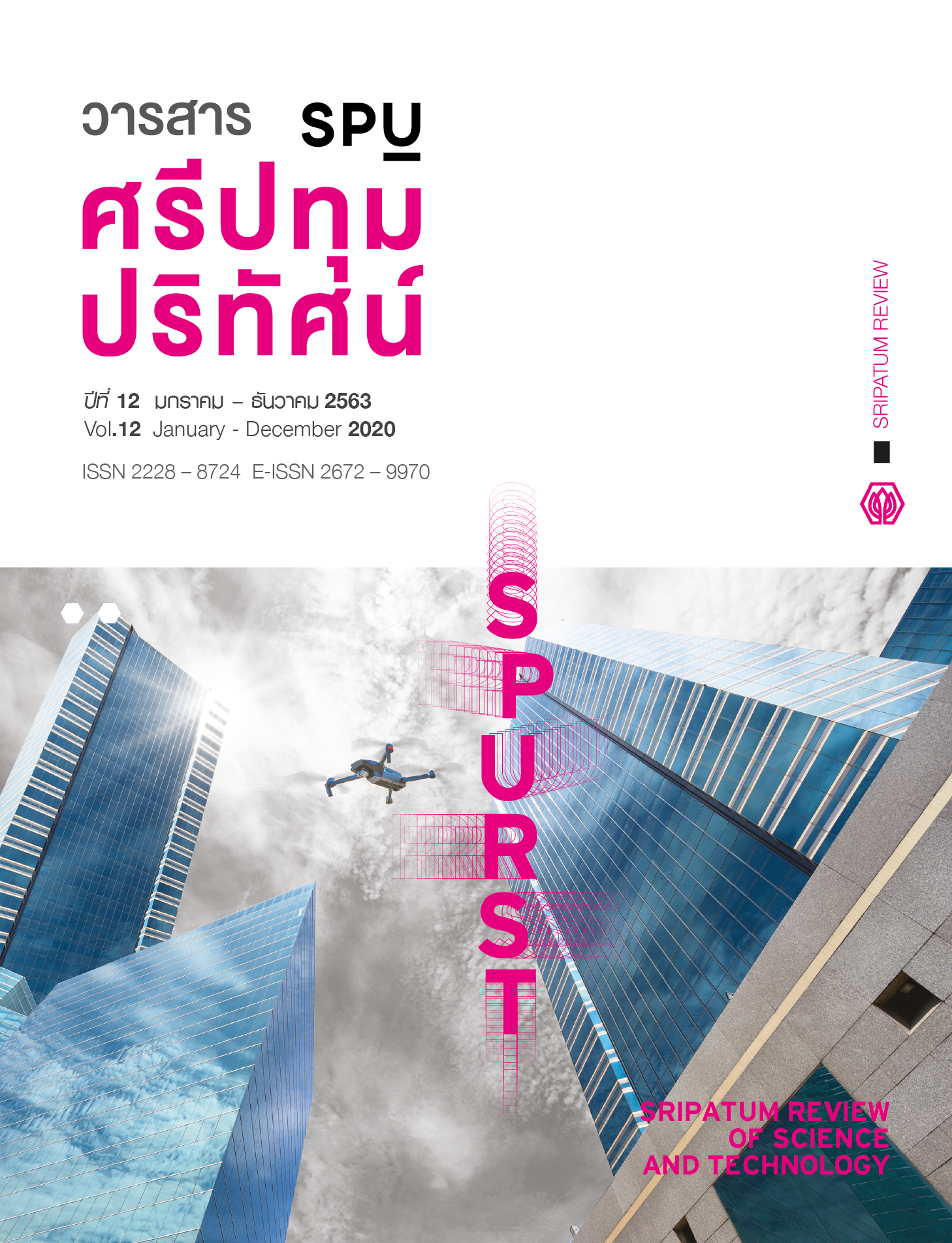การประมาณค่าพารามิเตอร์สำหรับการถดถอยที่แกร่งด้วยวิธีภาวะน่าจะเป็นสูงสุด และวิธีประมาณค่าเอส (Parameter Estimation for Robust Regression with Maximum Likelihood Estimation and S-estimation)
Main Article Content
บทคัดย่อ
สำหรับการประมาณค่าพารามิเตอร์หรือสัมประสิทธิ์การถดถอยในตัวแบบเชิงเส้น ตัวประมาณค่าพารามิเตอร์วิธีกำลังสองน้อยที่สุดจะเป็นตัวประมาณค่าที่ไม่เอนเอียงเชิงเส้นดีที่สุด แต่ถ้ามีค่านอกเกณฑ์เกิดขึ้นกับค่าสังเกตหรือค่าสังเกตนั้นต่างจากค่าอื่นมากๆ จะส่งผลต่อค่าประมาณที่ได้ จึงต้องใช้วิธีการถดถอยที่แกร่งมาประมาณค่าพารามิเตอร์แทน โดยบทความวิชาการนี้จะนำเสนอขั้นตอนและวิธีการประมาณค่าพารามิเตอร์ที่แกร่ง 2 วิธี คือ วิธีภาวะน่าจะเป็นสูงสุดและวิธีการประมาณค่าเอส พร้อมทั้งแสดงผลการเปรียบเทียบประสิทธิภาพของตัวประมาณค่าพารามิเตอร์วิธีภาวะน่าจะเป็นสูงสุด เมื่อใช้ฟังก์ชันความคลาดเคลื่อนของ Huber และวิธีการประมาณค่าเอส โดยใช้ค่าคลาดเคลื่อนกําลังสองเฉลี่ยและค่าสัมประสิทธิ์ของการตัดสินใจเป็นเกณฑ์การพิจารณา ซึ่งจากรายงานผลการวิจัยที่รวบรวมขึ้นพบว่า ค่าประมาณของพารามิเตอร์วิธีการประมาณค่าเอสจะมีประสิทธิภาพมากกว่าวิธีภาวะน่าจะเป็นสูงสุดเมื่อใช้ฟังก์ชันความคลาดเคลื่อนของ Huber กรณีที่ค่าสังเกตจากตัวแปรอิสระมีค่าต่างจากค่าสังเกตอื่นมากๆ (High Leverage) เมื่อความคลาดเคลื่อนแจกแจงปรกติ
Article Details
เอกสารอ้างอิง
Adedia, D., Adebanji, A., Labeodan, M., and Adeyemi, S. (2016). Ordinary Least Squares and Robust Estimators in Linear Regression: Impacts of Outliers, Error and Response Contaminations. Mathematics & Computer Science, 13(4), 1-11.
Ahmad, W. M. A. W., and Shafig, M. (2013). High Density Lipoprotein Cholesterol Predicts Triglycerides Level in Three Distinct phases of Blood Pressure. Basic and Applied Research, 10(1), 38-46.
Ahmed, M. G., and Maha, E. Q. (2016). Regression Estimation in the Presence of Outliers: A Comparative Study. Probability and Statistics, 5(3), 65-72.
Alma, O. G. (2011). Comparison of Robust Regression Method. Contemp. Math. Science, 6(9), 409-421.
Almetwally, E. M., and Almohgy, H. M. (2018). Comparison Between M-estimation, S-estimation, and MM estimation Methods of Robust Estimation with Application and Simulation. Mathematical Archive, 9(11), 55-63.
Candan, M. (1995). Robust Estimators in Linear Regression Analysis. Thesis of the Degree of Master of Science Program in Statistics. Ankara, Turkey: Hacettepe University.
Meral, C., and Onur, T. (2011). The Comparing of S-estimator and M-estimator in Linear Regression. Science, 24(4), 747-752.
Montgomery, D. C., Peck, E. A. and Vining, G. G. (2006). Introductions to Linear Regression Analysis. 4th ed. New York: John Wiley & Sons.
Panik, M. (2009). Regression Modeling Methods, Theory, and Computation with SAS.New York: Taylor & Francis Group.
Pitselis, G. (2013). A review on robust estimators applied to regression credibility. Computational and Applied Mathematics, 239(8), 231-249.
Rousseeuw, P. J., and Leroy, A. M. (2003). Robust regression and outlier detection. New York: John Wiley & sons.
Shafiq, M., Amir, W. M., and Zafakali, N. S. (2017). Algorithm for Comparison of Robust Regression Methods In Multiple Linear Regression By Weighting Least Square Regression (SAS). Modern Applied Statistical Methods, 16(2), 490-505.
Yarmohammadi, M., and Mahmoudvand, R. (2010). The effect of outliers on robust and resistant coefficient of determination in the linear regression models. Academic Research, 2(3), 133-138.
Yu, C. and Yao, W. (2017). Robust Linear Regression: A Review and Comparison. Communication in Statistics, 46(8), 6261-6282.


